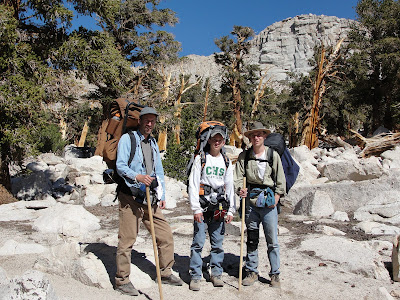Even in the summer there can be a morning frost on the ground at this elevation. The plants are all well adapted to grow and bloom in this harsh environment. This second picture is of rock fringe (Epilobium obcordatum) that we found holding to a rock face just below the pass. This is a cold and windy holdout, and there were pockets of snow not far away. It is a remarkable plant in a remarkable place.
Here are the three of us (me, Michael, Spencer) a bit travel-weary but happy among the foxtails. You can almost see how spectacular the air is








